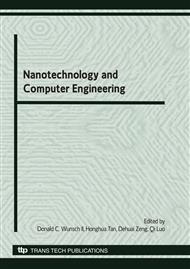p.198
p.204
p.209
p.215
p.222
p.228
p.232
p.237
p.243
Edge Based Level Set with Gaussian Filtering Regularized and its Application in Liver Segmentation
Abstract:
A novel edge-based active contour model (ACM) is proposed in this paper. Our edge-based active contour model has many advantages over the conventional active contour models. Firstly, the proposed model can get much smoother contour and needs much less iterations to evolution by being implemented with a special processing named Selectively Binary and Gaussian Filtering Regularized Level Set (SBGFRLS) method. Secondly, we introduce Bilateral Gaussian Filter which can preserve edges to smooth images. So we make weak edges more clear than traditional Gaussian Filter. Thirdly, the level set function can be easily initialized with binary function, which is more efficient to construct than the widely used signed distance function (SDF) because of the special processing. Experiments on synthetic image and segmenting liver from abdominal CT images demonstrate the advantages of the proposed method over geodesic active contours (GAC) in term of both efficiency and accuracy.
Info:
Periodical:
Pages:
222-227
Citation:
Online since:
June 2010
Authors:
Keywords:
Price:
Сopyright:
© 2010 Trans Tech Publications Ltd. All Rights Reserved
Share:
Citation:


